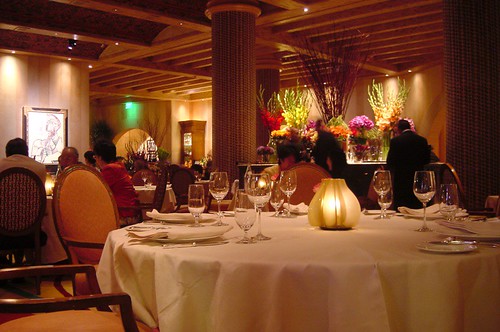
Restaurant SEO is all about Local SEO. For all but the very biggest and most famous restaurants, and especially in Orange County, there’s always going to be a big slice of the population searching for the right food – importantly – in the right location.
Local SEO is totally “location, location, location” and the great thing is – even obscure or hard-to-guess locations can not only benefit, but really shine. Look at it this way, 34 cities are incorporated in Orange County, and outside of those there are another 15 cities that are unincorporated – but just as good. Every one of these places is subdivided into more neighborhoods, hamlets, corners, zones and areas than any one person can name. Even the nicknames, or totally informal mini-neighborhood names will work and so will your plazas and malls and shopping center names.
You can break them down. So can your customers. If they’re not local, then they’re asking “Where are we?” and they’re getting accurate answers. You don’t have to memorize every place name in the county, just the ones relative to you, your customers, your delivery or service area and hopefully a good sample of the places surrounding.
TripAdvisor lists, at this writing, 7,094 restaurants in Orange County. Getting your restaurant to stand out from the rest is the point of this article.
On-Site Optimization
The point from above is that all of these place names are keywords. You want to use them and use them accurately on your website – not just in a “communities served” page, but in all the important places you’d normally use keywords.
It’s not just Laguna Hills Pizza – but it’s also “Nelie Gail Ranch Pizza” and “North Laguna Hills Pizza.”
That part of local is always a little easier. It what people in the SEO business call “onsite optimization.” The onsite places to continually be placing keyword phrases like these are in your Meta-Titles and Meta-Descriptions, in your pages, in the <h2> and <h3> titles tags and in the body copy, including in all your new blog posts.
Your basic task is to do as many of those “place name–specialty” phrases on as many pages as you can – including that all-important blog. Many restaurants will even make a page for every major item on their menu. Those can include recipes, serving tips, or, depending on your chef, some personal or historical anecdotes about the dish.
Off-Site Optimization
The bigger, and equally important part of Local SEO is happening offsite though. On all of those tough to track review and listing sites, like Yelp and FourSquare, you’ll find some link-value, and Google+ is really the young Gorilla on the scene. – whether or not it’s strictly one thing or another.
Some of your customers really will start with a listings and review site to choose that night’s dinner. Others will remember you because they saw you on Facebook. If you’re doing any kind of banquet, meeting or conference catering, then LinkedIn is just as well another place you should be.
Keep this in mind though. Lots of restaurant owners will lose their lunch over the sheer number of listings and review sites out there. You don’t need to be on all of them, but you do need to be consistent. In terms of Name, Address and Contact Info like Phone Number and email and website. Most of the lesser sites will add you automatically anyway.
Importantly though, a Google search results page will often list simple “Place Name + Main Style” search results beginning with Yelp listings. Try it with Laguna Hills Pizza. So, don’t neglect Yelp. Get your entire listing on there and keep it consistent with all the other places where your name address and phone number is listed.
The other one to keep in mind is your Google+ Local business page. Restaurateurs simply cannot underestimate the importance of Google+ for any aspect of SEO, though at first glance it may seem like a hybrid of a traditional review site and a Facebook-like social media network. It’s much more.
You also want to be included in Top-Restaurants lists like this one. It takes some savvy and some continual social PR and just plain socializing, but if you’re not good at that by now, it’s not difficult to get going. Just be a person, or let you company be a person, and a cool person, and you’ll be good.
Mobile
Cell phone searches using Maps or regular Google search also should not be underestimated. Google will definitely favor sites that are mobile ready (or responsive) even for searches made on a regular desktop PC.
Most of the site re-designs we’ve worked on have in the past year have been simply to do more responsive and mobile ready sites. So, do some socializing but most importantly, encourage your customers to review your restaurant.
Make sure your Google+ page matches up with your Google Maps listing too. It’s an important part of your local optimization process. And remember, it’s a process. Optimization is always a process. It can even be a long process, but it doesn’t need to be difficult or particular time-consuming process. It’s just one that needs to be worked at continuously.
Image via: http://www.flickr.com/photos/extravigator/295646011/